What's the plural of caboose?
Cabeese?
Cabooses?
CP had MLW cook up the M640 in hopes of downsizing their fleet. Basically, they wanted to be able to use a single 4000hp locomotive in place of two 2000hp locomotives, or three 4000hp locomotives in place of four 3000hp locomotives. A solid plan. And MLW, who was still trying to eke out an existence, was happy to accomodate, and built a single M640 for testing. It used a unique V18 block, the GE AT9 generator and 4 German-made traction motors, mounted on the outside axles of the three axle trucks. The reason for not powering the center axle was partially because the trucks couldn't accomodate the 6 motors and also because 6 of the traction motors (rated at 1000hp each) would have imparted too heavy a draw on the generator and either have stalled or damaged the engine. But, 1000hp per axle was too much power to effectively put down, especially in a DC locomotive that was built before the era of computer control. Perhaps with AC power and computer control it could have been successful. Or, 6 AC motors in the trucks with 6 inverters would have allowed it to generate 6000hp at the wheels with a 4000hp engine, but at a very low wheel speed (50% more traction but at 33% lower speed, which results in a near-productivity draw). In the end, CP kept the #4744 around for a while, but never ordered another. Eventually the unique V18 threw a rod through the blow, so it was fitted with a 3600hp V16, before eventually being retired and placed in a museum.

In reply to ShawnG :
I think it is cabooses. PRR avoided that whole controversy by calling them a cab car/cab cars.

I always liked their N5C cabin cars with the "turret" cupola.
I got to ride in the cupola of Steamtown's old DL&W caboose the one time I visited. That was a pretty cool experience.

https://mountainrailwv.com/tour/castaway-caboose-overnights/
You can spend the night in a caboose out in the woods of WV. The Durbin flyer train takes you up there and leaves you overnight, then picks you up the next day. I've not done it, but think it would be cool to do.

In reply to T.J. :
Oooh, that Wabash caboose looks cool. Strasburg Railroad has a similar "String of cabooses" hotels down the road from them.
I wish I could find another photo of it, but there was a photograph in one of Don Ball Jr.'s books of an ancient outside-braced wooden caboose but in fresh Burlington Northern green and orange. It was very strange and very awesome,
In reply to T.J. :
There is a caboose motel not too far from Strasbourg Railroad near Lancaster, PA. Unfortunately it's getting pretty shabby at this point.
NickD said:I wish I could find another photo of it, but there was a photograph in one of Don Ball Jr.'s books of an ancient outside-braced wooden caboose but in fresh Burlington Northern green and orange. It was very strange and very awesome,
Ah-ha! Found it. It was an old Fort Worth & Denver caboose. They were built in the 1890s, (possibly even earlier!) and still in active service at least as late as '76 when this photo was taken. Two still existed in Cleburne, Texas as late as '08 althought both were in terrible condition.

NickD said:NickD said:I wish I could find another photo of it, but there was a photograph in one of Don Ball Jr.'s books of an ancient outside-braced wooden caboose but in fresh Burlington Northern green and orange. It was very strange and very awesome,
Ah-ha! Found it. It was an old Fort Worth & Denver caboose. They were built in the 1890s, (possibly even earlier!) and still in active service at least as late as '76 when this photo was taken. Two still existed in Cleburne, Texas as late as '08 althought both were in terrible condition.
You think one of those might be a bit drafty?
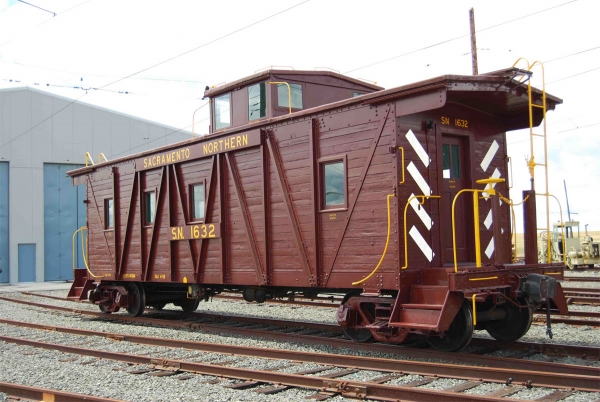
In reply to NickD and Duke :
This caboose starts off at the depot and you ride it up into the woods where you get unhitched from the train and left over night. The Red Caboose place sounds like the cabooses are permanently parked, so a little different, but still neat to sleep in a caboose.
Karacticus said:NickD said:NickD said:I wish I could find another photo of it, but there was a photograph in one of Don Ball Jr.'s books of an ancient outside-braced wooden caboose but in fresh Burlington Northern green and orange. It was very strange and very awesome,
Ah-ha! Found it. It was an old Fort Worth & Denver caboose. They were built in the 1890s, (possibly even earlier!) and still in active service at least as late as '76 when this photo was taken. Two still existed in Cleburne, Texas as late as '08 althought both were in terrible condition.
You think one of those might be a bit drafty?
No kidding. At least they had a coal stove for keeping warm. Inside of a 100 year old wooden body. Not an awful idea. Nope, not at all
There were also "bobbers", which were very short cabooses with two rigid mounted axles. The name bobber came from their inherently poor ride quality.

In reply to NickD :
I saw a caboose on a siding with a load of grain cars just off I-57 passing though Central IL a year ago. They were at an operating elevator & it didn't look like a storage siding, so it was a bit puzzling.
Never been Into trains but really enjoying this thread. These old machines are just beautiful pieces of engineering. I may have to go find a place to check em out
"The Route Of The Great Big Baked Potato". Not the most fearsome or impressive of monikers, but still a nickname that the Northern Pacific took on.
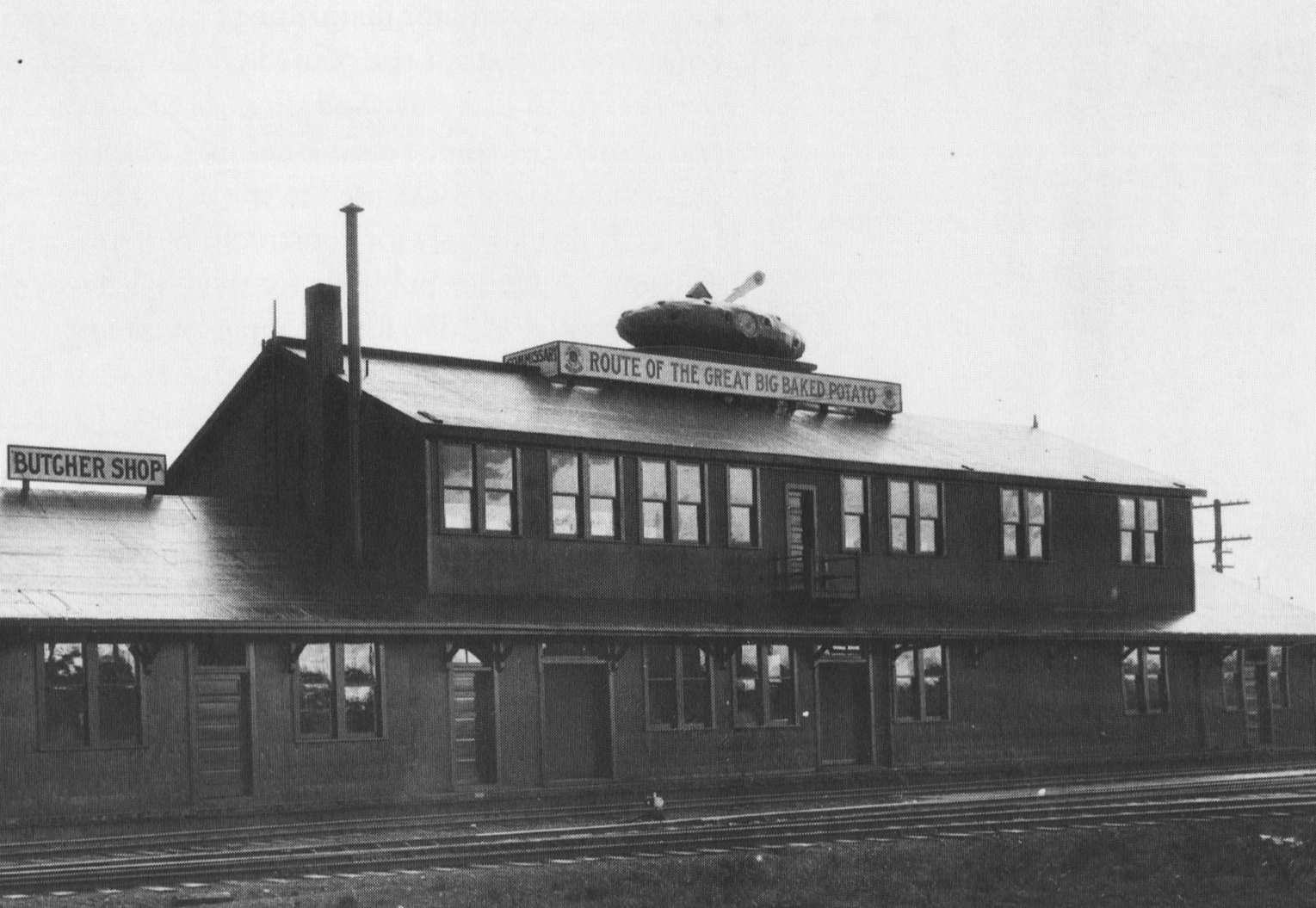
During the heydey of it's passenger operations, the NP discovered that potato growers in the Yakima Valley were having potatoes that grew far too large (two to five pounds, per potato). They were too big to bag or easily cook by the average person and so they were absolutely worthless. So the NP snatched them up for cheap, then had their head chefs work out a way to properly bake the 2lb potato.

Served as a side, I've read where travelers said you could order the steak (which automatically came with a Great Big Baked Potato) sans the steak and still have a full meal just from the potato.

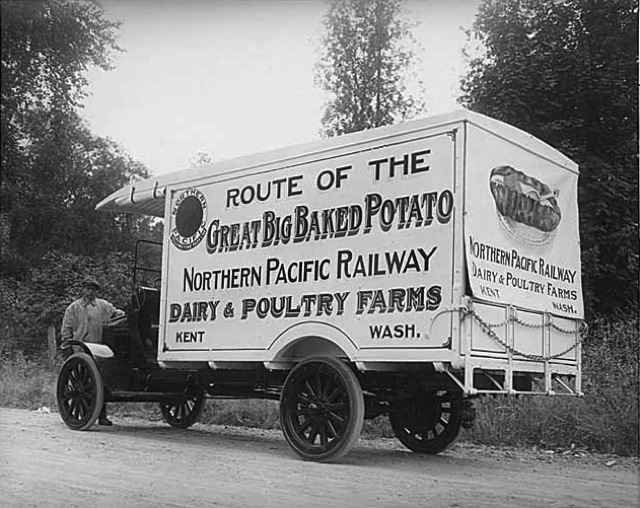
It's funny that the Northern Pacific would become synonymous with potatoes due to their dining car treat, and no Bangor & Aroostook, who transported potatoes for a large part of their revenue.

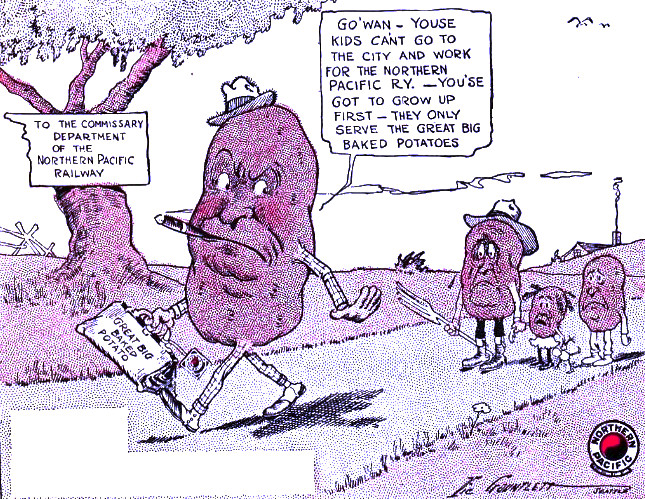
The Northern Pacific also had that great two-tone green passenger scheme designed by none other than
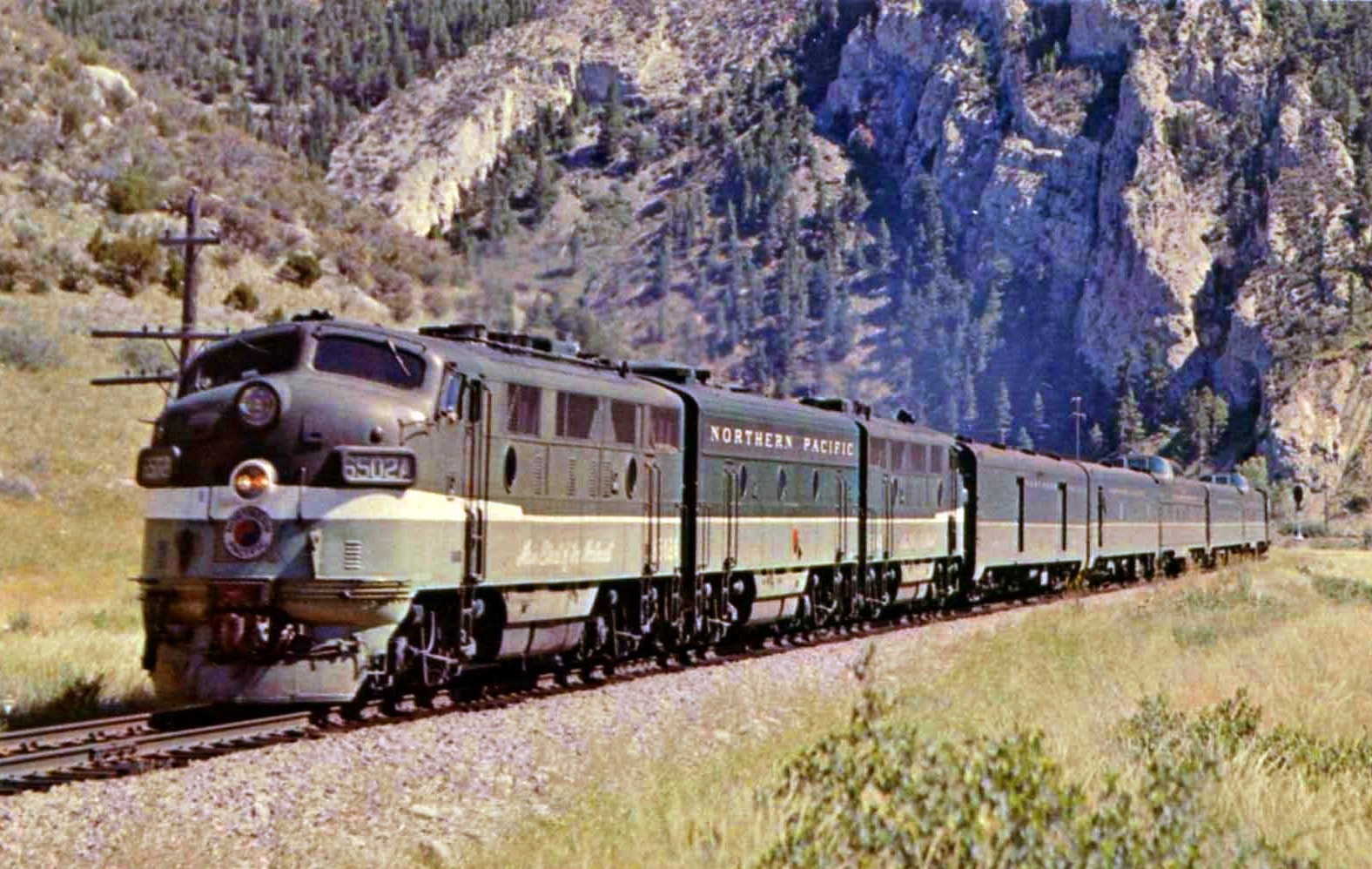


Also, if you have a few extra bucks and want to be able to say that you own a part on a steam locomotive, the American Steam Railroad is trying to fund staybolts for the firebox of Reading #2100. All it costs is $10. They need to finance 560 total, although as of Friday people had funded 144 of them. I myself paid for 10 of them today.
https://www.fireup2100.org/product/forge-a-staybolt/
They're trying to have them all purchased by March 31st.
While Reading T-1s are not my favorite engine, I'm still down to chip in for anyone restoring a big locomotive.
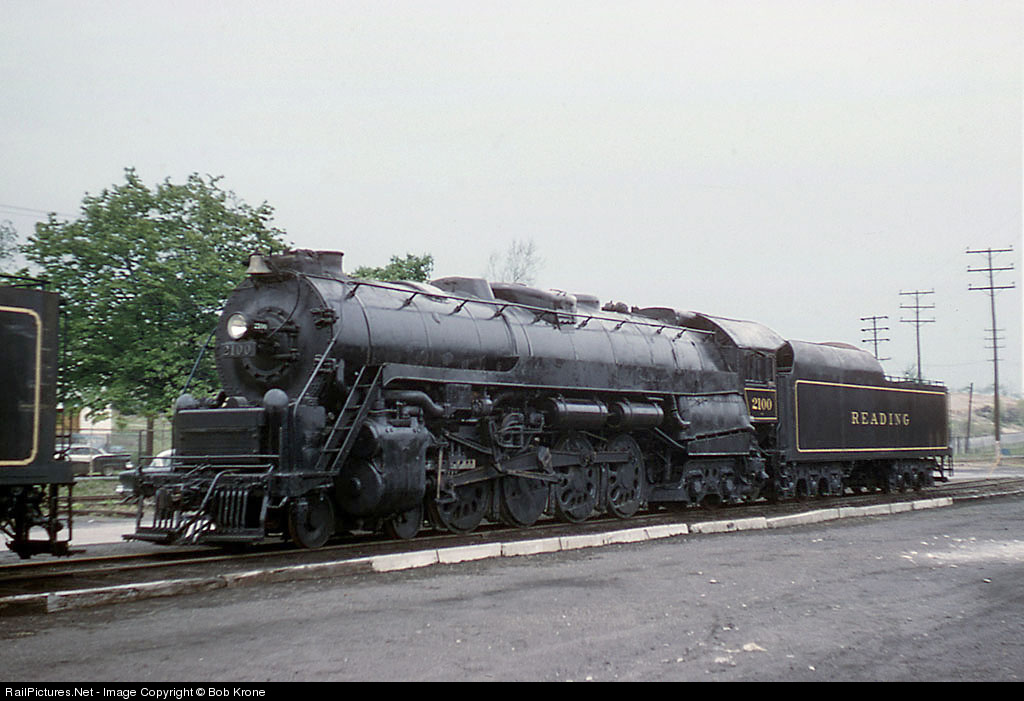
ChrisLS8 said:Never been Into trains but really enjoying this thread. These old machines are just beautiful pieces of engineering. I may have to go find a place to check em out
YES. i'm more into them than your average joe but still by no means any kind of expert. this thread has been extremely entertaining. NickD i don't know how much is left in the tank for you but please keep posting. its like i got signed up for texts from RailRoadFacts by accident but i actually love it.
Cumbres & Toltec dusted off their old Denver & Rio Grande Western steam-powered rotary snow plow this weekend for the first time in 20 years. The #487 is really struggling with wheelslip the whole video.
Timken #1111, aka "The Four Aces". In 1930, the Timken Roller Bearing Company (yes, that Timken) commisioned American Locomotive Works to build a single 4-8-4 Northern, numbered #1111, to serve as a demonstrator for the superiority of roller bearings over traditional friction bearings. Fifty two other parts manufacturers also donated parts on account to the unique engine. After being built, the Four Aces went on tour to 13 major railroads, impressing all of them in usage in both passenger and freight usage.
It's also worth noting that while no color photos of the #1111 exist, the locomotive was not black, but instead had a dark green boiler jacketing, cab and tender, white detailing on the wheels and polished rods, making it a very attractive engine.
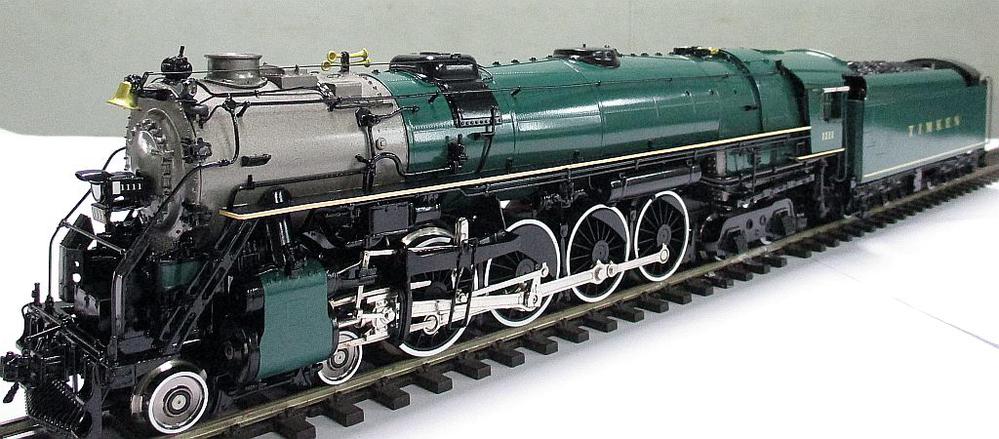
A popular demonstration was to have the locomotive pulled by three men (or women, in the case of this photo from Chicago) to demonstrate how much less friction there were with roller bearings.
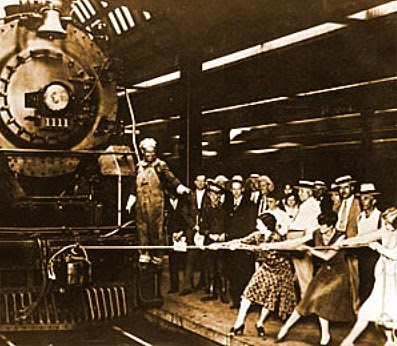
By 1931, the locomotive was testing with Northern Pacific, hauling a dynamometer car and the North Coast Limited at sustained 88mph speeds. But during it's testing with the NP it would suffer a firebox crown sheet failure. Timken demanded that NP pay to repair the locomotive that they damaged, while NP refused to pay to repair a locomotive that they didn't own. So, in the end, the Northern Pacific purchased the #1111, changed the number to #2626, changed a few details like the headlight and painted the whole locomotive black, and pressed it into service
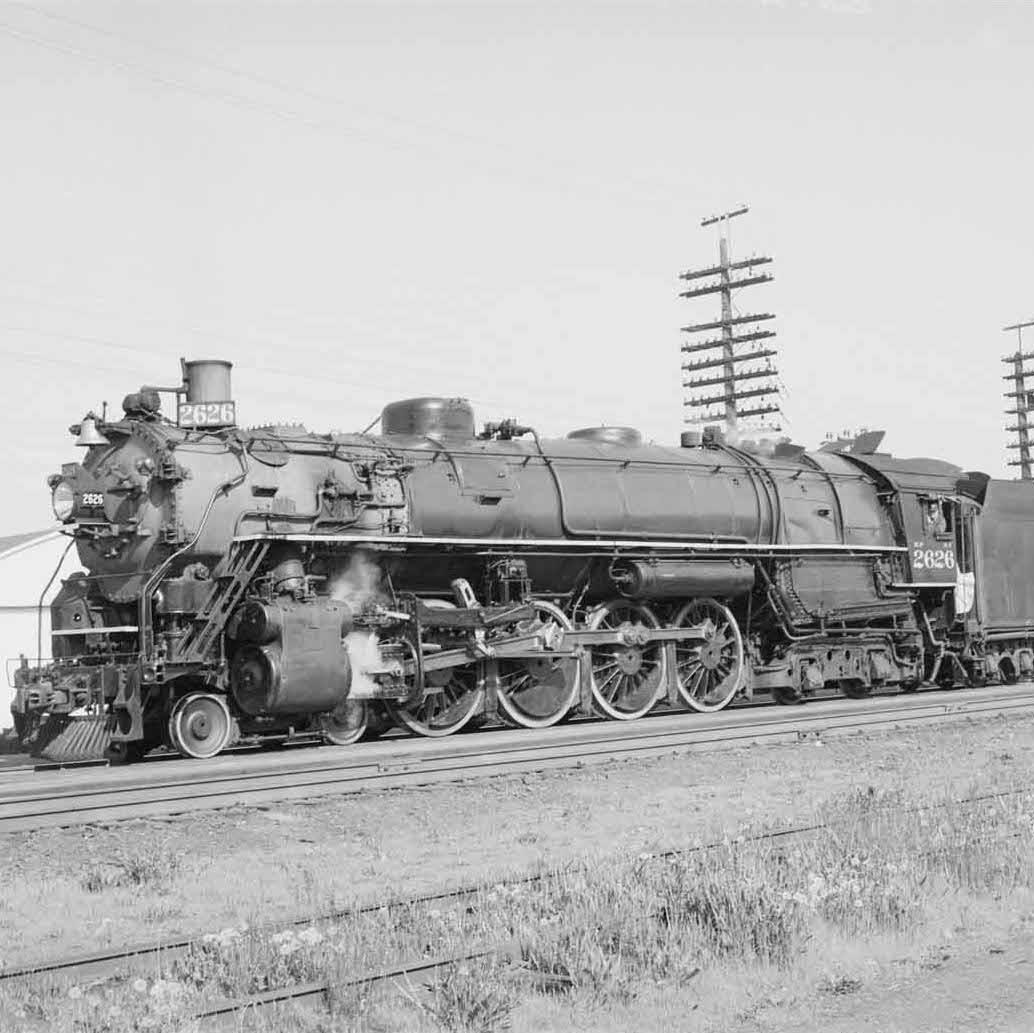
In 1957, the Northern Pacific was dieselizing and the writing was on the wall for the #2626/#1111. Efforts began to be made to preserve the unique locomotive, with Timken looking at purchasing it and moving it back to their headquarters under its own power to display it in it's original appearance. Unfortunately, in an era before cell phones and e-mails, communication both inside and outside the company was slow, and by the time Timken and Northern Pacific began working out a deal, the locomotive was scrapped.
You'll need to log in to post.